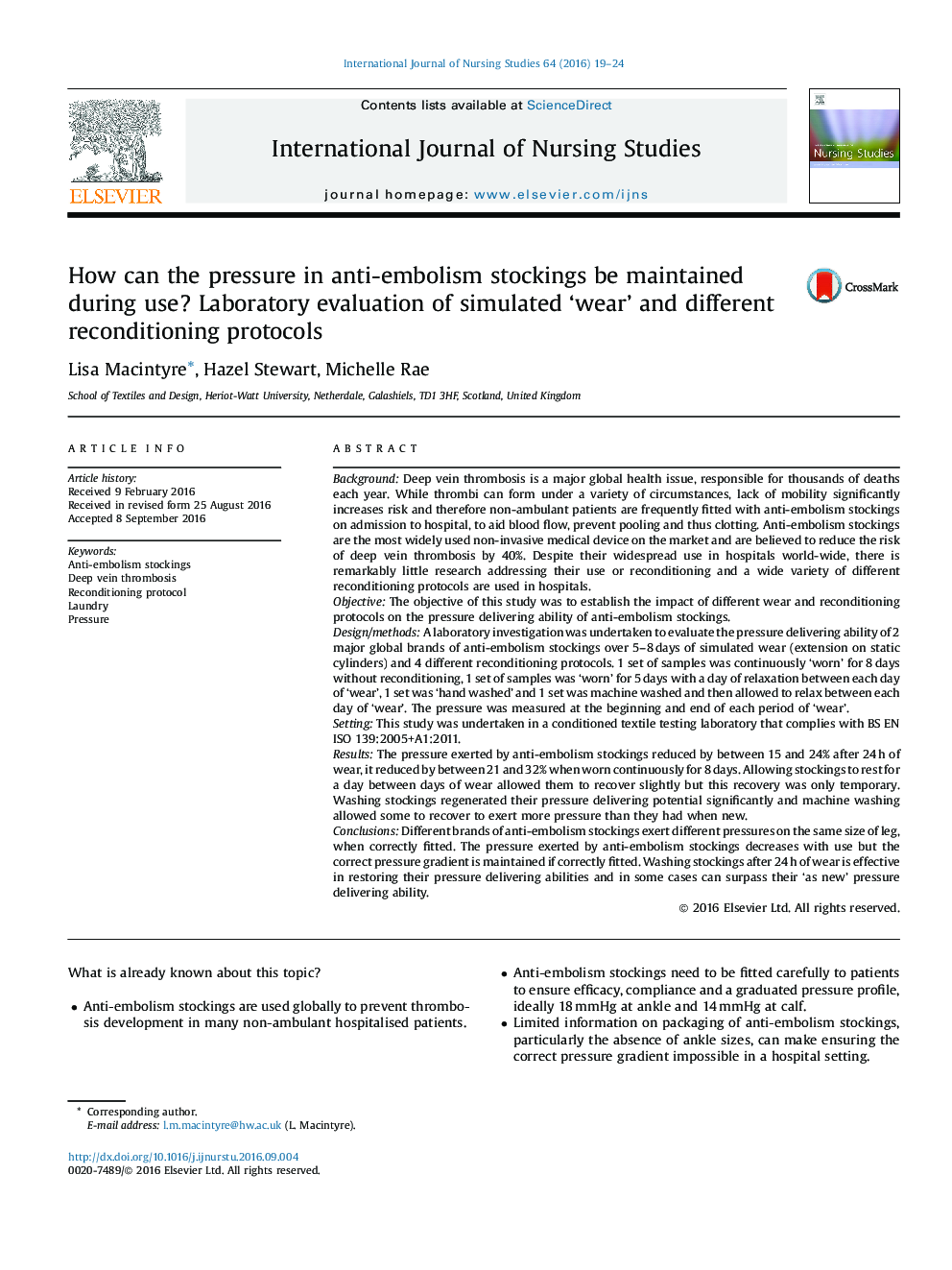| کد مقاله | کد نشریه | سال انتشار | مقاله انگلیسی | نسخه تمام متن |
|---|---|---|---|---|
| 5121037 | 1486505 | 2016 | 6 صفحه PDF | دانلود رایگان |
BackgroundDeep vein thrombosis is a major global health issue, responsible for thousands of deaths each year. While thrombi can form under a variety of circumstances, lack of mobility significantly increases risk and therefore non-ambulant patients are frequently fitted with anti-embolism stockings on admission to hospital, to aid blood flow, prevent pooling and thus clotting. Anti-embolism stockings are the most widely used non-invasive medical device on the market and are believed to reduce the risk of deep vein thrombosis by 40%. Despite their widespread use in hospitals world-wide, there is remarkably little research addressing their use or reconditioning and a wide variety of different reconditioning protocols are used in hospitals.ObjectiveThe objective of this study was to establish the impact of different wear and reconditioning protocols on the pressure delivering ability of anti-embolism stockings.Design/methodsA laboratory investigation was undertaken to evaluate the pressure delivering ability of 2 major global brands of anti-embolism stockings over 5-8Â days of simulated wear (extension on static cylinders) and 4 different reconditioning protocols. 1 set of samples was continuously 'worn' for 8Â days without reconditioning, 1 set of samples was 'worn' for 5Â days with a day of relaxation between each day of 'wear', 1 set was 'hand washed' and 1 set was machine washed and then allowed to relax between each day of 'wear'. The pressure was measured at the beginning and end of each period of 'wear'.SettingThis study was undertaken in a conditioned textile testing laboratory that complies with BS EN ISO 139:2005+A1:2011.ResultsThe pressure exerted by anti-embolism stockings reduced by between 15 and 24% after 24Â h of wear, it reduced by between 21 and 32% when worn continuously for 8Â days. Allowing stockings to rest for a day between days of wear allowed them to recover slightly but this recovery was only temporary. Washing stockings regenerated their pressure delivering potential significantly and machine washing allowed some to recover to exert more pressure than they had when new.ConclusionsDifferent brands of anti-embolism stockings exert different pressures on the same size of leg, when correctly fitted. The pressure exerted by anti-embolism stockings decreases with use but the correct pressure gradient is maintained if correctly fitted. Washing stockings after 24Â h of wear is effective in restoring their pressure delivering abilities and in some cases can surpass their 'as new' pressure delivering ability.
Journal: International Journal of Nursing Studies - Volume 64, December 2016, Pages 19-24
